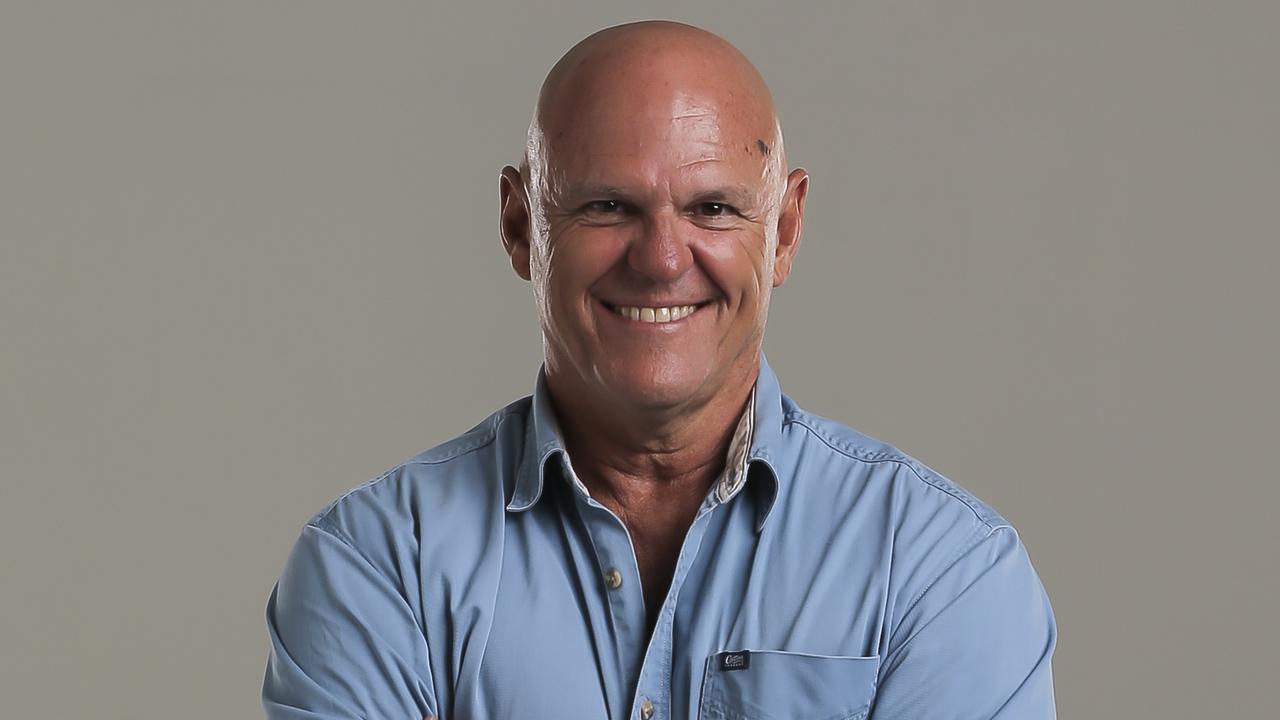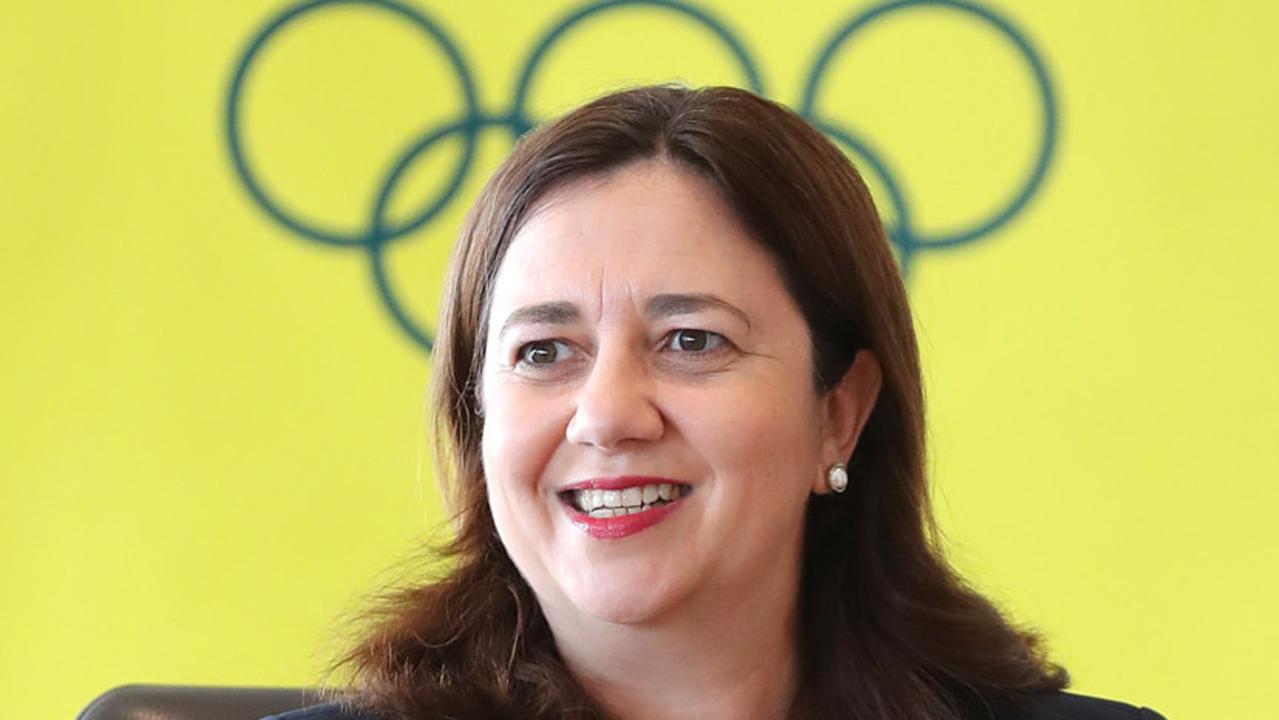Opinion: National renewable energy plan up in the air
THE Palaszczuk Government is fast discovering the feel-good energy policies announced at the last election are like trying to repair a circuit-breaker in a cyclone.
Opinion
Don't miss out on the headlines from Opinion. Followed categories will be added to My News.
YOU’D imagine for a place called the “Sunshine State” that powering more homes and businesses with solar energy would be a relatively simple equation. Lots of sun equals lots of energy. Simple.
But the Palaszczuk Government is fast discovering the feel-good energy policies announced at the last election are like trying to repair a circuit-breaker in a cyclone.
A target of 50 per cent renewable energy use by 2030 was the pin-up promise.
Beneath this was a commitment to achieve one million rooftop solar systems by 2020. Between all the whimsical language about a “new industry” and “job generation”, however, there was zero detail about how these lofty goals would be achieved.

The recent South Australian storm, which left the entire state without power, has sharpened the focus on Queensland’s renewables race.
Critics and supporters of alternative energy sources have retreated to their respective bunkers to throw stones at each other over what role South Australia’s wind farms played in the mass outage.
In many cases, the switch has been flicked on the facts.
The one-in-50-year storm packed mini tornadoes and 80,000 lightning strikes, buffeting South Australia, knocking out three major 275 kilowatts lines.
There was a sudden loss of 315 megawatt of wind-generated power and, importantly, the interconnector which sucks power from Victoria when required, overloaded and tripped.
With SA powered by 40 per cent wind and with coal-fired power stations closed down to achieve its renewables target, the question has been raised whether Labor’s promise threatens Queensland’s energy security.
The Queensland Renewable Energy Panel, which is investigating how to implement Labor’s target, insisted the policy was technically possible but raised issues of reliability.
“This requires careful consideration of the technical details of operating a grid, which can differ depending on the characteristics of the local load, and the availability of electricity supply from interconnecting regions,” the panel said.
“For example, Queensland is a long network with limited meshing which means it may be more likely to suffer operational problems with renewable technologies compared with deeply integrated grids in Europe, the United States and China.”
So, like South Australia, the Queensland interconnector becomes integral. The pace that the Palaszczuk Government is attempting to alter Queensland’s power generation profile in isolation from what’s going on elsewhere, is what could herald problems.
It’s much more than just adding a few solar and wind farms to the grid. Queensland has 12,400MW of grid-connected generation capacity with 85 per cent coming from coal and gas and only 5 per cent from renewables.
The Australian Energy Market Operator (AEMO) has predicted Queensland power consumption will grow at a moderate speed of 15.7 per cent over the next 15 years, driven by LNG exports rather than household consumption.
To reach a 50 per cent renewable consumption target, the Government will have to mothball gas or coal-fired power stations.
Energy Minister Mark Bailey this week acknowledged such shutdowns could be part of the equation.
“That’s something that I understand the independent panel will look at in terms of their draft report that’s due in the next couple of weeks,” he said. Bailey insists renewables and coal could coexist.

And he’s right. Yet, because Labor is targeting renewables rather than carbon emissions, it could be the less polluting gas stations that are displaced. And the Queensland scheme could have the perverse impact of increasing our power prices while cutting interstate energy costs and their coal power use.
This is what ACIL Allen modelling, conducted for the Queensland Productivity Commission, found.
“Queensland consumers would effectively subsidise other National Energy Market (NEM) businesses and consumers in achieving emissions reduction,” the QPC said. “This occurs because a Queensland renewable energy target would result in additional wind generation being developed in Queensland and offered into the NEM at prices below the short-run marginal cost of coal plants.
“At periods of low demand, such as overnight, excess supply is exported across the border to NSW.
“This drives prices lower and results in reduced coal plant production in NSW.”
Put the technical hurdles and the effectiveness of a state-based renewables target aside for a second and ponder the cost. The subsidy required to ramp up to 50 per cent renewable use by 2030 in Queensland has been estimated at $10.8 billion.
That’s cash the Queensland Government can’t afford.

It’s the equivalent of giving up everything it makes on gaming machine revenue.
Taxes or energy prices would have to be hiked.
On the one million rooftop solar promise, it will happen anyway without intervention by 2022. To achieve it by Labor’s 2020, ACIL Allen found the Government would have to introduce a 45¢/kW feed-in tariff to attract investment, the same scheme which is now costing Queenslanders up to an extra $276 annually on their power bills.
Yet these subsidies won’t go on forever. Long-run renewable energy costs will decline to the same level as fossil fuels by 2030, according to CO2CRC’s Australian Power Generation Technology report. However, questions about how to and how much intermittent energy sources, such as wind and solar, we can use to displace coal and gas, remains.
What’s been lost amid the teeth gnashing since the South Australia storm is that the real issue isn’t renewables at all.
The problem is that states, such as Queensland, are operating like islands.
They’re trying to retrofit renewables into antiquated, decades-old, electricity systems as if they operate in isolation.
Whether wind was an issue or not, what South Australia showed was that improved interconnection between the networks is necessary so they operate as one.
A national network, with South Australia wind power and Queensland solar and reliable coal and gas when required, is the optimal way to achieve renewable targets.
Of course, that would require leadership and a sustained accord across the political spectrum. When it comes to compromise, politicians would rather stick it where the sun doesn’t shine.
Steven Wardill is The Courier-Mail’s state political editor.
Email: steven.wardill@news.com.au


